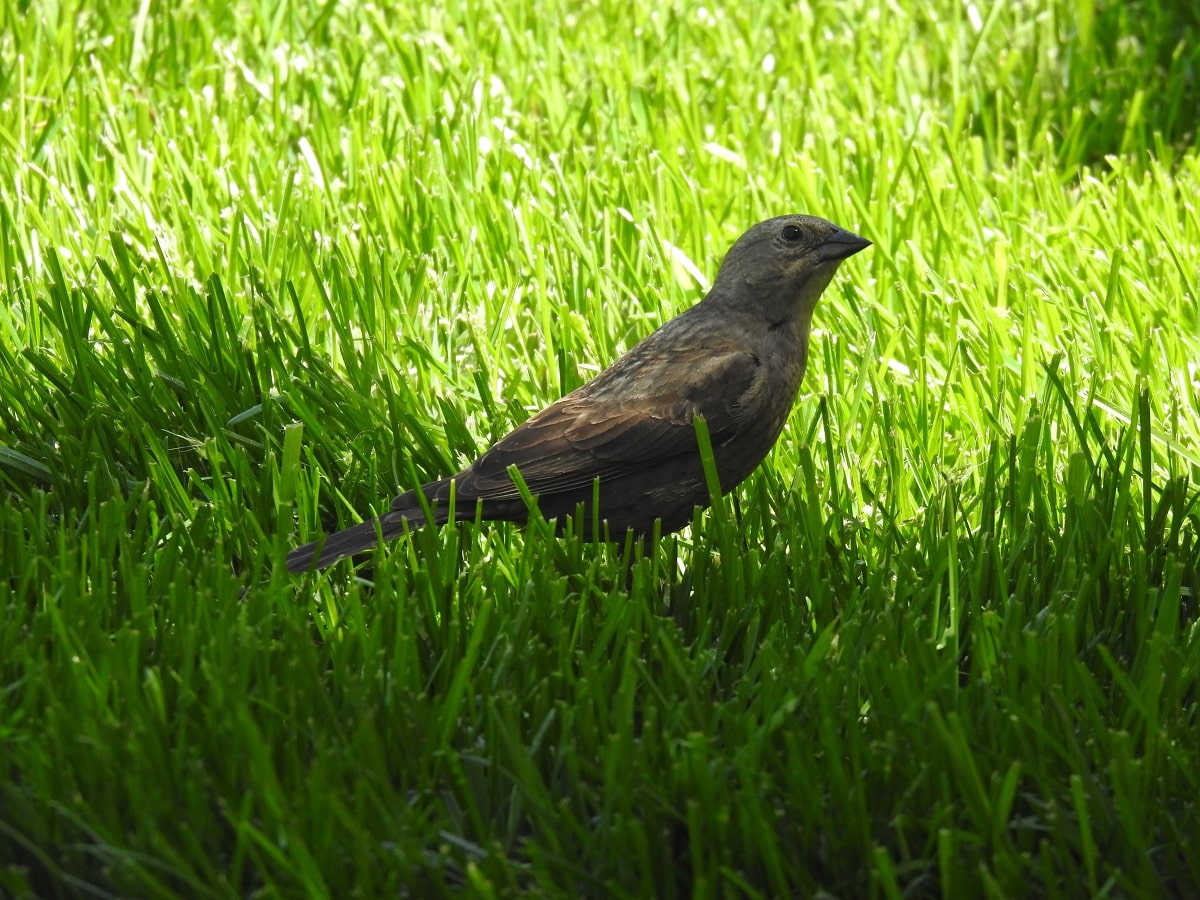Brown-headed Cowbird: The Clever Trickster of the Bird World
The Brown-headed Cowbird is one of nature's most cunning opportunists.
Unlike most birds that carefully build nests and raise their own young, this species lays its eggs in the nests of unsuspecting host birds, leaving them to do the hard work of incubation and chick-rearing.
Despite their sneaky behavior, these birds are fascinating with distinctive features and intriguing habits.
From their shimmering plumage to their elaborate mating displays, they are more than just brood parasites, they are survivors with an evolutionary strategy that has stood the test of time.
Let's take a closer look at this species, starting with how to identify these peculiar birds in the wild.
Identifying Male - Size, Field Marks
Males have iridescent black plumage on the back and wings, which can appear green or purple in certain lighting. The head is a rich brown.

His tail feathers are shorter and squared at the tips. Males are slightly larger than females but not noticeable unless side by side.
Identifying Female Cowbird
Female brown-headed cowbirds have a much plainer appearance with a light brown body and a distinctive pale throat.
The female also has a brownish-black tail with white-edged feathers. Her eyes are dark brown, and her beak is slender and pointed.

Both male and female cowbirds have a stocky build, short necks, and relatively large, rounded heads.
They have strong legs and feet adapted for ground foraging, and their beaks are well-suited for probing the soil and leaf litter in search of insects and seeds.
Fledgling Description
Immature fledgling cowbirds are similar to adult females in appearance. They are a mottled brown with buff-colored plumage and light streaks on its breast and belly.
Its eyes are dark, and the beak is a light color. The fledgling cowbird has a rather stubby tail, and its wings are not yet fully grown, making it unable to fly long distances.
Courtship/Mating Habits
The mating season for Brown-headed Cowbirds typically begins in late spring and continues through the summer months.
During this time, males engage in elaborate displays to attract females. They puff out their feathers, spread their wings, and perform a series of hops and bows while emitting a distinctive gurgling call.
Females observe these displays and select a mate based on the quality of the performance.
Brown-headed Cowbirds are polygynous, meaning that males mate with multiple females throughout the breeding season.
This strategy increases the chances of successful reproduction, as it allows males to fertilize the eggs of several females.
Nesting Habits
Unlike most bird species, Brown-headed Cowbirds do not build their own nests. Instead, they practice brood parasitism, laying their eggs in the nests of other bird species.
This strategy allows the cowbird to avoid the energy and time investment associated with nest-building and parental care.
Brown-headed Cowbirds are known to parasitize the nests of over 200 different bird species.
They typically choose host species that have similar egg sizes and incubation periods to their own.
This ensures that the cowbird eggs have a higher chance of hatching and being raised successfully by the host parents.
Female Cowbirds lay one egg per day and one egg per host nest site. Often removing one egg of the host species which keeps the count the same.
Cowbirds have evolved to lay eggs that closely resemble the eggs of their host species, which helps to reduce the chances that their eggs will be rejected by the host bird.
A female Cowbird can lay as many as 30 to 40 eggs each breeding season.
| Brown-headed Cowbird Nesting Habits | |
|---|---|
| Eggs | 30 - 40 |
| Incubation | 8 - 13 days |
| Nestling Phase | 10- 11 days |
| Broods | Doesn't Raise Young |
Feeding Habits Diet
Brown-headed Cowbirds primarily feed on seeds, insects, and small fruits. They are opportunistic foragers, taking advantage of available food sources in their environment.
During the breeding season, they may also consume higher amounts of protein-rich insects to support their reproductive efforts.
Cowbirds often forage in mixed-species flocks, associating with other birds such as blackbirds, starlings, and grackles.
This social foraging strategy allows them to locate food more efficiently and provides increased protection from predators.
Impact on Host Species
The presence of a cowbird egg in a host nest can have negative consequences for the host species.
In some cases, the cowbird chick may out-compete the host chicks for food and parental attention, leading to reduced survival rates for the host offspring.
Some birds recognize when eggs don't belong in their nest and will either remove them or abandon a nest site.
Some of the birds that will reject Cowbird eggs are Robins, Catbirds, Brown Thrashers, and Blue Jays.
While the Northern Cardinal doesn't reject Cowbird eggs, I've witnessed that the growth rate was close enough that both species were able to survive and fledge.
Frequently Asked Questions:
Are Brown-headed Cowbirds Bad?
While some people view Brown-headed Cowbirds as pests due to their brood parasitism and potential negative impact on host species, they are a natural part of the North American ecosystem and play a role in controlling insect populations.
How can I discourage Brown-headed Cowbirds from parasitizing nests in my backyard?
There isn't much you can do for birds that nest in shrubs and trees. Cowbirds are clever and watch other species build nest and lay eggs.
You would have to watch as much as they do. But if you are providing nesting boxes, make sure they have small entrance holes that can keep the black birds out.
Additionally, avoid providing large, open bird feeders that may attract cowbirds and other large flocking birds.
Do Brown-headed Cowbirds Migrate?
Yes, Brown-headed Cowbirds are migratory birds. They breed in North America and migrate to the southern United States and Mexico for the winter months. They may join large flocks of other black birds for roosting.






